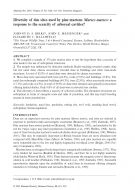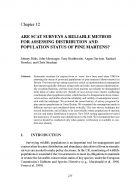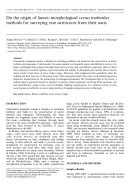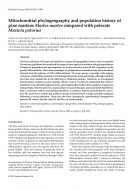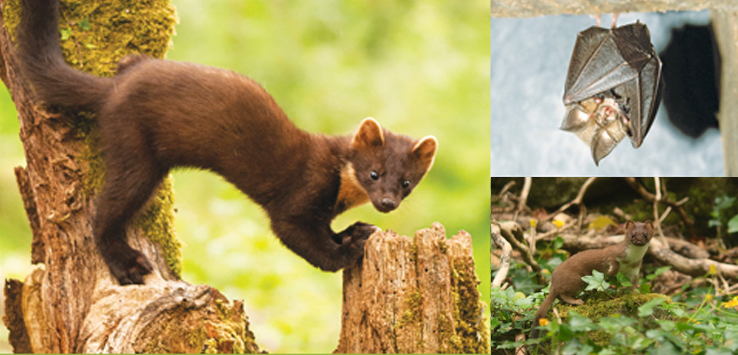Resources | Papers
-
Birks, J. et al. (2005). Diversity of den sites used by pine martens
Dens are an important resource for pine martens and sites are selected in response to predation risks and energetic constraints. We compiled a sample of 370 pine marten dens to test the hypothesis that a scarcity of sites leads to the use of suboptimal structures.
Download -
Birks, J. et al. (2004). Are scat surveys a reliable method for assessing distribution of pine martens?
Systematic searches for marten feces or ‘scats’ have been used since 1980 for assessing the status of protected populations of pine martens in Britain. This report reviews the recent history of survey programs for pine marten populations in Britain and examines the accuracy of marten scat identification in the field.
Download -
Davison, A. et al. (2002). On the origin of faeces: morphological versus molecular methods for surveying rare carnivores from their scats
Charismatic mammals remain a linchpin in attracting publicity and funds for the conservation of native habitats and organisms. Unfortunately, the same animals are frequently scarce and difficult to survey. For many, confirming their presence through faecal surveys is the only cost-effective approach.
Download -
Bontadina, F. et al. (2002). Radio-tracking reveals that lesser horseshoe bats forage in woodland
Over the past 50 years European populations of the lesser horseshoe bat have severely declined. To date, studies of the foraging behaviour of this species have been limited as its low mass (4±8g) precluded the use of radio-telemetry because commercially available radio-transmitters exceeded 10% of its body mass. In this study, radiotransmitters weighing <0.35g were built.
Download -
Davison, A. et al (2001). Mitochondrial phylogeography and population history of pine martens compared with polecats
The flora and fauna of Europe are linked by a common biogeographic history, most recently the Pleistocene glaciations that restricted the range of most, if not all, species to southern refugial populations. Changes in population size and migration, as well as selection, all left a signature on the genetic differentiation that is present today.
Download


